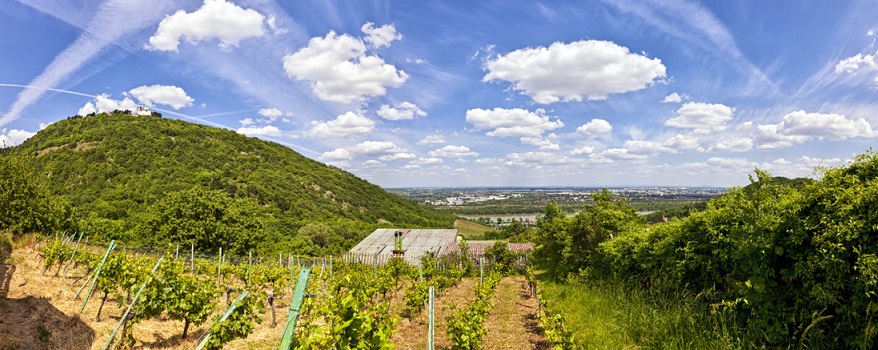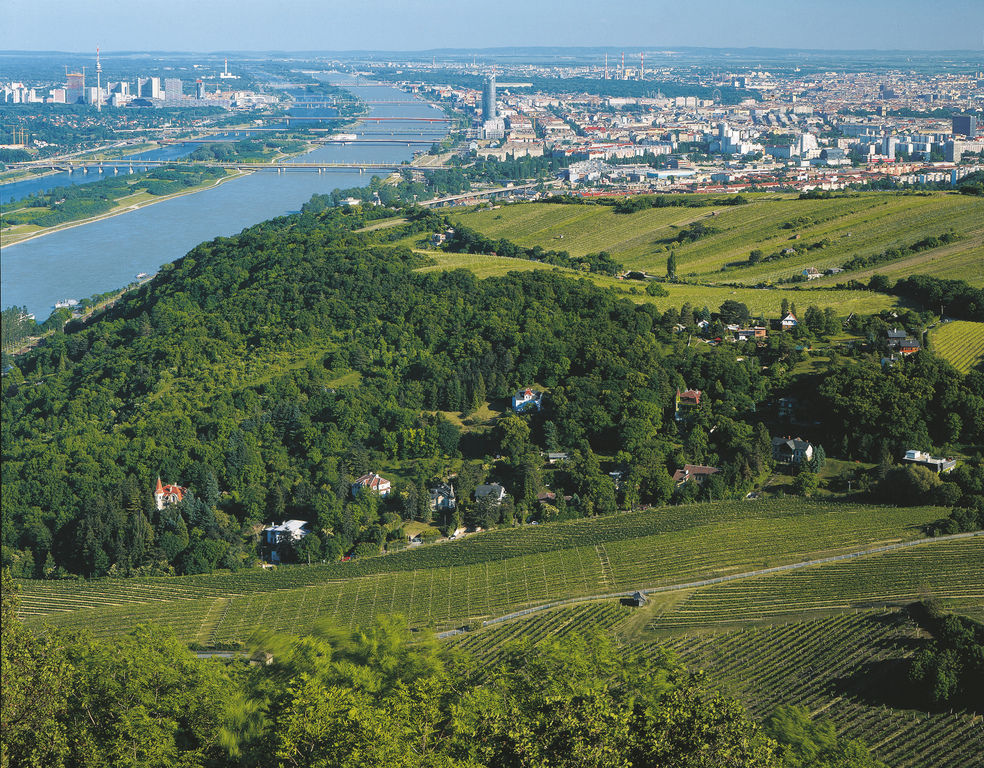The Leopoldsberg “towers” 425 metres into the air on the northern outskirts of Vienna. This is also the north-eastern end of the Vienna Woods and the last foothills of the Alps drop sharply down to the Danube here.
A mountain with a long history of settlements
As early as 900 B.C., a small settlement arose on the Leopoldsberg, existing for almost 400 years and in the 1st century B.C., it was home to a late-Celtic settlement. Archaeologists have made findings in the area that originate from the Hallstatt period as well as remnants of craft activities from later periods.
Today, the remnants of the Castle on the Leopoldsberg , originating from the 13th century, can still be seen. This castle complex had long since been left to fall into ruin. Since then, construction work has begun to enable the use of the location for concerts, festivals, and weddings. At this point, there is still no information available regarding when this complex will be accessible to the public again.

A site of many battles
The Leopoldsberg was originally called the Kahlenberg but was renamed as the Leopoldsberg in 1693, after the ruined chapel was rebuilt and dedicated to St. Leopold. The neighbouring Sauberg thereupon received the name Kahlenberg.
The “Heimkehrer-Gedächtnismal” (Homecomers’ Memorial) was erected in 1948 to commemorate the suffering of those returning home from the Second World War. In the past, fires were lit in the large brazier, which lit up much of the surrounding countryside. There are a total of 10 memorial plaques to find on the mountain, some of which commemorate battles, and others, various significant people.

Follow your nose up the Leopoldsberg
The “Nasenweg” (Nose Path), which gets its name from the mountain’s steep slope, runs for 1.5 kilometres and 250 metres of climb through steps and stairs up to the summit. It’s also worth stopping at one of the five viewing platforms on the way to enjoy the view of the city, the Danube, the Donauinsel, and the skyline of the Donau City.


